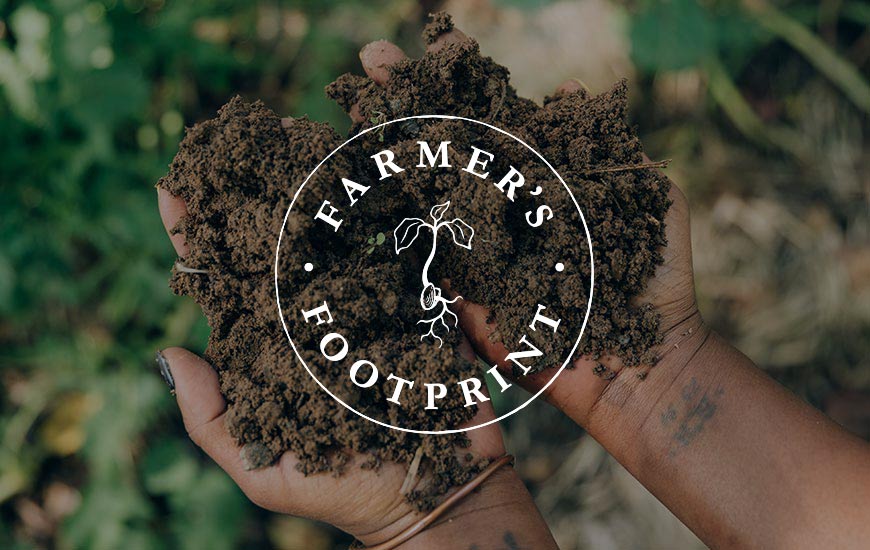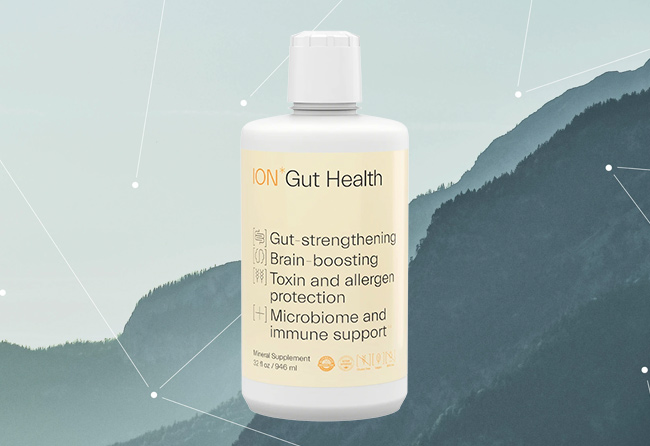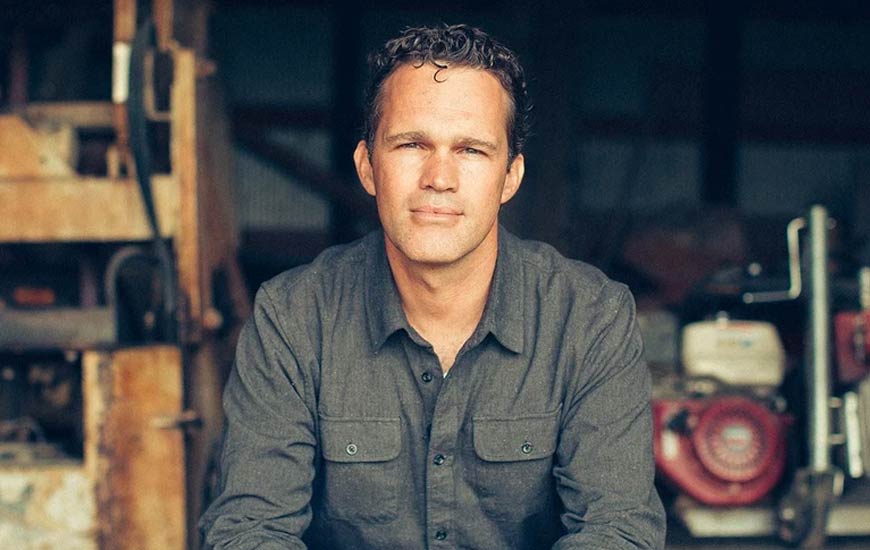POWERED BY THE GLOBAL HEALTH EDUCATION INITIATIVE
Webinar Replay:
Virome: A Template
For A Regenerative Future
Before you watch this webinar…
Check out our introductory blog post + short video on Virome: A Template For Regenerative Future with Dr. Zach Bush.
Webinar Summary & Resources
Welcome + Introduction >
Introduction to The Virome >
What Creates Vulnerability to Disease? >
The Microbiome >
The Global Genome >
Archaea Supports Evolution >
Bacteria Carry Cellular Information >
Fungi: Energy Producing Experts >
Protozoa + The Advent of Mitochondria >
Are Viruses Part of the Microbiome? >
Do Humans Need Viral Information to Survive? >
Viruses Are Within and All Around >
What Protects Humans from Viral Infection? >
Problematic Responses to COVID >
How Glyphosate Destroys Immunity >
How Do Viruses Travel? >
Air Pollution Increases Viral Concentration >
Align with the Virome >
Welcome + Introduction
(0:00) Dr. Zach Bush begins our conversation with a moment of silence and some deep breaths. (5:17) As we dive into the subject matter, he encourages us to humbly walk away with a deeper connection to the origin of life and appreciation for its complexity, and he reminds us that with all of science, we still don’t actually understand the miraculous nature of life.
We are excited as physicians and scientists to come to you with a story of regeneration, a story of a nature that we are born within, that has a deep intention for human life to not just happen, but to adapt.
– Dr. Zach Bush
Introduction to
The Virome
(7:35) The genes are only a rough blueprint for the human body. Ultimately, medical science still doesn’t understand how the body forms itself or the impetus behind how we heal. Therefore, we should approach this subject matter with awe, humility and respect; and we should be cautious of information that positions itself as all-knowing. (9:57) COVID is just one of the many conditions that have become an all-encompassing diagnosis, bundling many different kinds of pathology. It’s important to remember that these diagnoses are best guesses.
(12:15) When we receive a diagnosis of a disease, it’s not because that disease has leaped out of nowhere and attacked us. It’s a result of an overall collapse in fundamental human health that makes us vulnerable to disease. Mother Nature is the original nature that we evolved within, and our collapse in health is largely due to our disconnect and isolation from that original nature.
Health happens all of the time. Disease only happens when there’s a failure of health.
– Dr. Zach Bush
Dr. Bush shows a graph of the prevalence of chronic disease and its steep upward trajectory since 1971. The rate of autism continues to double about every 4 years. Historically, human health was at a level where it could maintain a balanced relationship to its environment, which is what prevents disease. Today, we see a rise in disease because we can no longer sustain that balanced relationship. The source of many of these diseases lies within the gut-brain connection.
What Creates Vulnerability to Disease?
(14:26) In regards to COVID-19, we’re seeing across the globe an overall vulnerability of health that makes us susceptible to disease. Our prevalence of comorbid conditions make populations vulnerable to an expression of COVID, resulting in mortality. The U.S. sees COVID-related mortality at much younger ages than those around the globe, constituting 25% of global deaths attributed to COVID despite only having 4% of the global population. This points to the overall state of compromised health within the country. (16:46) The U.S. national economy is greatly challenged by the burdens of its healthcare system and its overall burden of disease within the American population. The country spends more on its healthcare system each year than on the military budget.
The Microbiome
(17:06) Current science around the microbiome takes us far beyond a singular idea of “gut health.” Recent genomic studies show that there is a rich microbiome within healthy tissues in the body all of the time. Chronic diseases are the result of a disruption of the microbiome within and around our bodies.,
The entire body is this complex ecosystem of biodiversity… We have this organic garden within us.
– Dr. Zach Bush
(18:08) In the past, we’ve explained human life through the lens of the DNA or human genome. However, we now understand that we are an amalgamation of life within us and around us. Humans are not a superior manifestation of life, but are in fact the result of the microbiome and dependent upon the microbiome.
(22:04) We actually don’t understand a lot of the data within human DNA because only 1% of it is programming for a gene. The human genome is relatively simple with 20,000 genes. This places human genomic complexity somewhere between a fruit fly (which has about 13,000 genes) and a flea (which has 30,000 genes). About 99% of our DNA still remains mysterious to science and is labeled “junk.” This suggests that our human resilience and intelligence is perhaps hidden within this 99% of our DNA.
The Global Genome
(23:35) The microbiome of the body contains infinitely more genetic material than the human cell. 40,000 species of bacteria are a healthy amount within the human microbiome, and the vast majority of the proteins made in the human body are made by bacteria. This discovery is comparable to Galileo’s discovery of heliocentricity, which challenged the scientific, philosophical, and religious belief systems of the time. The human genome pales in comparison to the complexity and sheer amount of genetic information coming from bacteria, parasites and fungi. For life to evolve, it was necessary to create a process through which information could be shared so that adaptation could happen.
Human health does not have the human cell at the center of it. Human health is derived as the human cell orbits within a complex system of bacteria, fungi, and beyond.
– Dr. Zach Bush
Archaea Supports Evolution
(27:15) Dr. Bush introduces archaea — a simple bacteria that emerged 3.5 billion years ago. They thrive in many different kinds of environments, and their job is to move genetic information. What makes them unique is that they can transfer information in a lateral way as opposed to a vertical, inherited method. In this way, archaea transfer advantageous adaptation to all other bacteria so that those could also survive within the environment.
(29:08) This lateral relay of information is evident when RoundUp-resistant weeds emerge or when bacteria evolve that resist antibiotics. Life could not have evolved through extinction events and other cataclysms without this process. When stressful events happen, the genetics change so that the species can adapt and survive. And the change in genetics is transferred in this lateral way via informational “envelopes” to other species so that they, too can survive.
(31:03) In the past, biodiversity greatly increased after extinction events. This is because of the ability to adapt genetic code when under stress. The greater the threat to survival, the more quickly a genetic system will attempt to find an adaptive variation that allows for survival. (32:45) Today, humans have become the cataclysmic event that is stressing biology — we are creating the sixth extinction on the planet. As nature moves deeper into this event, there is more pressure to create adaptation and biodiversity in order to survive.
Bacteria Carry Cellular Information
(33:45) Bacteria emerged about half a billion years after the archaea. Bacteria are also capable of horizontal gene transfer, both through direct contact and via bacteriophage. Bacteriophage are viruses that carry information from one species to another, or from one location to another, within bacteria and archaea. This process enables adaptive information to be communicated long-distance and not only by direct contact.
Fungi: Energy Producing Experts
(35:30) 1.5 billion years after the emergence of bacteria, fungi become the first multicellular organisms to emerge from life. Fungi can not only metabolize energy, but they can essentially create food and digest directly from the environment around them. This makes them digestive, energy-producing experts. Spores become an additional mode for long-distance travel. (44:55) Looking at the fossil record, it is mysterious as to how there can be a sudden re-arrangement of biology such that a new species, or mammal, could happen. But viruses, with their capacity for the transfer of genetic information, give us insight as to how that could be possible.
Protozoa + The Advent of Mitochondria
(45:15) Protozoa have cellular features that are more similar to plants and animals than bacteria or fungi. Protozoa inhabit all ecosystems and were the advent of the mitochondria. They have the capacity to store genetic information long-term, which allows for greater and greater complexity to emerge. There are approximately 1.4 quadrillion bacteria in and around a human body, and there are, then, 14 quadrillion mitochondria that live inside a healthy human body’s cells. When we are exposed to antibiotic substances such as herbicides, we are killing the bacteria and mitochondria around and within us. This accelerates aging and degeneration, setting the stage for biologic collapse. (48:53) Dr. Bush examines the proposal of antibiotics and hydroxychloroquine to treat COVID and explains that he would be hesitant to use these indiscriminately due to how they destroy bacteria and protozoa. When we destroy these microecosystems, it generates drug-resistance and chronic diseases.
We exacerbate human disease when we undermine the microbiome within us.
– Dr. Zach Bush
(50:25) Plastids + mitochondria are critical to complex plant life and human life, and they are the power plant of a multicellular organism. The DNA within the mitochondria allows for remarkable variation, and there is constant communication happening between the mitochondrial DNA and the nuclear DNA.
Are Viruses Part of the Microbiome?
(53:30) The microbiome is defined as microorganisms that live in and on the human body. It’s important to note that viruses do not fit this definition because they are not alive. Viruses are not pathogens that can leap out of nowhere and attack us, but they are the mechanism for genetically transferring information between species. While viruses are not a part of the microbiome, they do facilitate communication between other organisms that make up the microbiome. Because they can transfer communication across the globe, viruses became a widespread mechanism for how life adapts and bio-diversifies. Viruses have been travelling the world over long before humans arrived and are not dependent upon humans to travel.
(56:45) Viruses create the capacity to rearrange genetics, allowing for new adaptations and species to emerge. More than 50% of the 20,000 human genes were inserted and preserved into human DNA by viruses. At least 8% of the human 20,000 genes was inherited by RNA retroviruses. Viral communication is simply an update to our internal “software.”
Our genetic code was literally built by [viruses]. If we decide that we are in opposition to genetic information… If we are in opposition to the viruses themselves and we are out to kill them, we are bound to go extinct because we are going to lose the adaptive capacity of being human.
– Dr. Zach Bush
(01:01:17) Dr. Bush explains some of his early research on the endocrine system and how protease inhibitors (commonly used to treat HIV patients) block communication within these viral genetic transfer mechanisms. This creates huge complications as we disrupt the endocrine system. Our antibiotic, antiviral environment and attitude that we’ve adopted is undermining the very physiology of cellular energy production.
Do Humans Need Viral Information to Survive?
(1:03:42) Genetic information inserted by retroviruses made mammalian reproduction possible. For instance, retrovirus insertion Eri15 allowed for mitochondrial DNA to be deleted from the sperm before fertilization so that only nuclear DNA is present in the sperm. This enables the female reproductive cell to hold all of the genetic information for biodiversity and adaptation within her mitochondrial DNA. Another retrovirus insertion allows for the human placenta to form. There are thousands of instances of this, but even just these two examples demonstrate that initial mammalian life would have been impossible if not for viruses and their genetic information deliveries.
(1:06:07) RNA from the HERV-H sequence of a virus (similar to coronavirus) is what makes stem cells able to reproduce different tissues from the same cell. HERV-H enables the shift of genetic information to express any cell that is needed. This is a function necessary to the evolution of life, again, made possible by a virus.
Viruses Are Within and All Around
(1:08:41) Viruses are within and all around us by the multitudes. There are more viruses present in 1 liter of sea water that is more than there are stars within our known universe. Within one gram of soil, we see a similarly astounding number. In a healthy adult human body, there are trillions of viruses present. There are 10⁸ viruses present in neonatal fecal samples by the end of one week. Yet, the baby does not yet have the ability to make antibodies. This shows us that human bodies do not primarily interact with viruses via antibodies and the adaptive immune system.
(1:11:48) Antibodies are not even clinically present until 5-6 weeks after a virus has left and the symptoms are gone; they are a late-stage and non-critical mechanism present in response to a post-viral syndrome. Antibodies, then, are not responsible for clearing a virus or alleviating the symptoms. It is the innate immune system, the healthy mechanisms already present, that bring the body into balance with the virome. Because of this, medicine that is primarily targeted at eliciting an antibody response is not very effective.
You cannot prevent a pandemic, nor can you change the trajectory of a pandemic, with an antibody response… induced by a vaccine. So this whole story that everybody’s arguing now —whether we are “pro vaccines” or “anti-vaccines” — is actually antiquated.
– Dr. Zach Bush
(1:15:05) In a study of over 8,000 adults, scientists found a variety of 94 (out of 120) known viruses in 42% of the participants. The study also found that HIV was 5x more prevalent than Hepatitis C and influenza in this same group of healthy adults from the U.S. and Europe. This implies a fundamental misunderstanding of HIV and how it does not necessarily directly cause AIDS with its mere presence.
We currently only question whether or not HIV is present. However, the more productive inquiry would be: What is the difference in the environments where people are having HIV-related mortality versus the environments where people are not experiencing symptoms or mortality?
(1:18:02) Studies have found HIV in blood banks as far back as 1959, though it didn’t emerge as a syndrome until the 1980’s. So something in the human relationship to the virome changed between 1959 and early 1980’s that created the environment for AIDS. It’s not a “new” virus that emerged; instead it’s a fundamental change in relationship to the environment. Similarly, there were almost no cases of Hepatitis C reported in the 1950’s and 1960’s; but by 1992, there is an increased presence of sickness and disease co-present with the presentation of Hepatitis C. When we create toxic load and stress on our internal and external environments, it disrupts our innate immune system’s ability to access the information it needs to stay in balance with the virome.
What Protects Humans from Viral Infection?
(1:20:38) If antibodies are not the primary response mechanism for appropriately balancing our biology in relationship to viruses, then what is? Enzymes seem to play a key role in keeping HIV from manifesting into disease. (1:21:15) Ribosomes are the enzyme that turns RNA genetic information into proteins. So the only way that a virus can reproduce its information is through this ribosome. Ribosomal reproduction is one of the most highly regulated, carefully controlled processes in our biology. They protect us from over-producing viral information. Viruses cannot simply jump into the biologic system, attack it, and take over. When disease occurs in relation to a viral syndrome, it has to be the result of multiple, massive breakdowns in biological communication within the cells.
Problematic Responses to COVID
(1:23:28) In this segment, Dr. Bush discusses some of the problematic public health responses to COVID-19. A huge misplaced response is the spraying of DNA-damaging toxins in an effort to “kill” a virus that is, in fact, not alive. With these responses, we increase the biologic breakdown that made us susceptible to the disease in the first place. This widespread use of carcinogenic toxins will cause a rise in cancer cases and mortality over the next few years. If we destroy or sterilize the microbiome, then humans don’t have the immune system function to fight tumors, much less cancer metastasis. As we increase antiseptic and herbicide pressure on the environment, we will accelerate cancer, autoimmune conditions, and other conditions that are a result of the cell communication breakdown. Viruses also tend to overexpress themselves in environments of cancer.
How Glyphosate Destroys Immunity
(1:26:10) Glyphosate is the most abundant, widely-used antibiotic on Earth. Dr. Bush shows graphs that demonstrate the correlated rise in the use of glyphosate with the rise in cancer cases, cancer mortality, and senile dementia. In 2015 alone, 2 billion kilograms of glyphosate were used worldwide.
(1:28:33) Glyphosate breaks apart the tight juncture system within the body, which is a key component to the innate immune system. When these barriers are lowered, we lack the protection mechanisms that enable us to be in a healthy relationship to our environment.
Where we see the heaviest spraying of glyphosate directly correlates with the highest prevalence of COVID-19. Pork production all over the world also creates microbiome stress that disrupts the innate immune system and sets the stage for disease. It is important for us to examine our consumer behavior that drives these productions.
How Do Viruses Travel?
(1:31:39) Viruses primarily travel through the air and not via respiratory droplets. During the first 4-8 weeks of the pandemic, masks and other distancing measures could have helped slow viral travel. After that initial amount of time, the virus has already traveled around the globe independent of human travel. A very high concentration of this coronavirus is necessary before we show any signs of imbalance or disease. The state of the environment is more of a predictor of the outcomes of the virus rather than simply the presence of the virus.
When we think that we’re seeing an epicenter of germs, we’re probably seeing an epicenter of dysfunctional biology. We’re seeing an epicenter of lack of health, created by lifestyle and environment.
– Dr. Zach Bush
(1:36:05) The majority of COVID-related deaths were the result of pre-existing, comorbid conditions that cannot be blamed on the virus. If we do not change our environmental relationship and behavior, then the next coronavirus will be even more destructive because our antibiotic response has undermined our innate immunity.
Air Pollution Increases Viral Concentration
(1:38:20) Viruses also travel bound to particulate (pm2.5), which is produced by our transportation and energy industries. The greater the concentration of pm2.5, the greater the concentration of viral material. Before this level of air pollution and pm2.5, viruses would distribute themselves equally throughout the atmosphere. . Now, we see a pm2.5 increase in the Northern Hemisphere each year beginning in September causing abnormal clumps and concentrations of viral travel. We also see increases in pm2.5 in areas where there is soil degradation. Today, we can map high concentrations of pm2.5 to the epicenters of COVID
(1:44:32) Glyphosate also disrupts the shikimate pathway, which is essential for our innate immunity. Humans cannot have an intact immune system in isolation; human immunity is interrelated to our environment and dependent upon the environment.
(1:45:47) The precursors to pm2.5 are complex, living carbon structures that come out of the microbiome. These structures are the communication network between cells, and they are how cells figure out how to do regeneration and adaptation. Genomic information is present throughout all of nature, and it is this communication that enables humans to be in a healthy relationship to our environment. When we poison the environment with glyphosate, we undermine the microbiome, which is our connection to this essential communication and immunity.
The whole matrix of bacteria,archaea, protozoa, and fungi have been building a viromic information stream that’s allowed for adaptation and bio-diversification to happen on the planet. If we can embrace that, if we can come to terms with the fact that we are made from viruses, from the intelligence of nature as a whole… we may have the opportunity to move into the most creative capacity that humans have ever imagined.
– Dr. Zach Bush
Align with the Virome
(1:51:51) As Dr. Bush wraps up, he reminds us that if we can bring ourselves to align with the virome and the overall architecture for life on this planet, we will see an explosion of life, intelligence, and creativity.
Relationships that we have with each other as humans, the relationships that we have with the world around us —whether it’s plants, animals, microbiome, everything — it’s very connected. The route to respect that relationship is paramount to the survival of our planet.
– Dr. Zach Bush
Links
A coalition of farmers, educators, doctors, scientists, and business leaders aiming to expose the human and environmental impacts of chemical farming and offer a path forward through regenerative agricultural practices.
Support Gut
Health with ION*
Biology BaseCamp
Citations
Characterization of the human heart mitochondrial proteome
Evolution and inheritance of animal mitochondrial DNA: rules and exceptions
An integrase of endogenous retrovirus is involved in maternal mitochondrial DNA inheritance
Retroviral Genes Expressed by the Human Placenta
HERV-H RNA is abundant in human embryonic stem cells and a precise marker for pluripotency
Metagenomics and future perspectives in virus discovery
The blood DNA virome in 8,000 humans
Aging of hepatitis C virus (HCV)-infected persons in the United States
An African HIV-1 sequence from 1959 and implications for the origin of the epidemic
APOBEC3G levels predict rates of progression to AIDS
Signal Transduction in Ribosome Biogenesis: A Recipe to Avoid Disaster
Microbial dysbiosis is associated with human breast cancer
SARS-Cov-2RNA found on particulate matter of Bergamo in Northern Italy: First evidence
Deposition rates of viruses and bacteria above the atmospheric boundary layer





